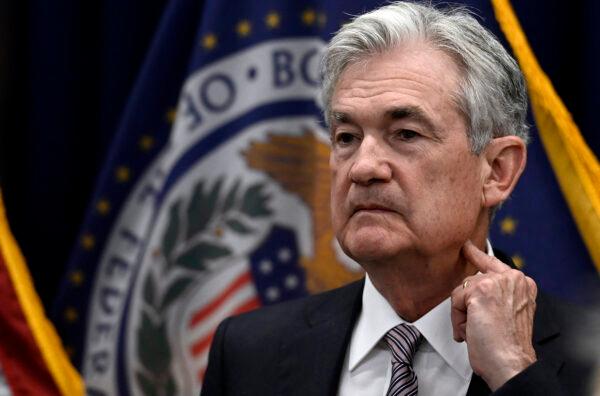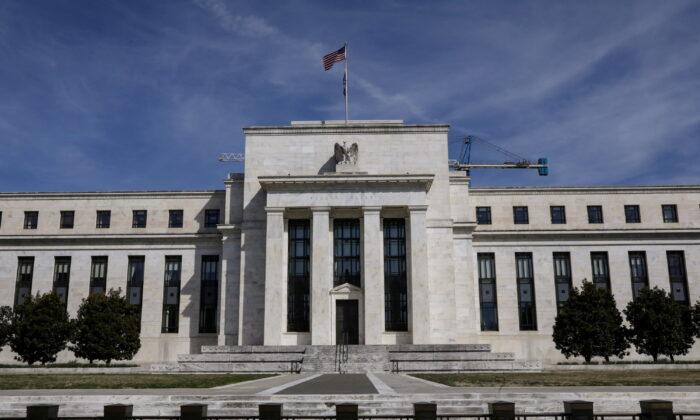The U.S. money supply has contracted for the first time since the Federal Reserve started publishing the data in January 1960.
In total, the national money supply stands at more than $21.2 trillion, which is still more than 37 percent above the pre-pandemic level of about $15.458 trillion.
M2 is a measurement of the U.S. money stock that includes cash, checkable deposits, traveler’s checks, small-denomination time deposits, shares in retail money market mutual funds, and other categories of deposits that can easily be converted to cash.
Ryan McMaken, an economist and senior editor at Mises Institute, recently alluded to the Rothbard–Salerno money supply measure (TMS, or “true money supply”). This metric, an alternative to the Fed’s official M2 gauge, was developed by economists Murray Rothbard and Joseph Salerno to be a more accurate depiction of money supply movements because it includes Treasury deposits at the central bank and excludes retail money funds and short-time deposits.

Whichever measurement is used by observers, experts contend that the series of rate increases since March 2022 have been working.
Over the past year, the Federal Open Market Committee has raised interest rates by more than 450 basis points, lifting the benchmark federal funds rate to a target range of 4.50 to 4.75 percent. This influences the overall money supply because higher interest rates result in two crucial trends. The first is that consumers will fork over additional interest on loans, which can weigh on cash reserves. The second is that a rising-rate climate will nudge consumers into non-deposit investments, such as stocks, exchange-traded funds (ETF), mutual funds, bonds, and annuities.
Despite the contraction and the gradual slowdown in the expansion of the money supply over the past year, the financial system is still flooded with liquidity, suggesting that monetary policymakers at the U.S. central bank still have plenty of work to normalize market conditions.
Does This Confirm a Recession?
Many economists will contend that a slowing or contracting money supply will typically trigger a recession.“We will have a recession because we’ve had five months of zero M2 growth, money supply growth, and the Fed isn’t even looking at it,” he said. “We’re going to have one whopper of a recession in 2023.”
“Where we’re going is determined by where the money supply is going,“ he said. ”The last seven months, the money supply has actually contracted by 1.1 percent. That’s almost unprecedented. That means, of course, you have a big change in the money supply and then there’s a transmission mechanism. There are lags between the thrusts in the money supply, whether it’s going up or it’s going down, and what happens to the real economy. Sometime, in 2023, we’ve got a pretty big recession baked in the cake.”
In the first half of 2022, the U.S. economy fell into a technical recession—that is, back-to-back quarters of negative gross domestic product—but the country recovered in the second half, growing by 3.2 percent in the third quarter and 2.9 percent in the fourth quarter.
The baseline scenario for many economists and market analysts is a recession in 2023 or 2024.
“If a much-feared recession does emerge as the year unfolds, this would seem to be the most widely predicted contraction of the economy that I can remember,” said Mark Hamrick, senior economic analyst for Bankrate. “It would also be essentially self-inflicted by the Federal Reserve, which has been aggressively raising interest rates in the cause of slaying the inflation monster.”






Friends Read Free